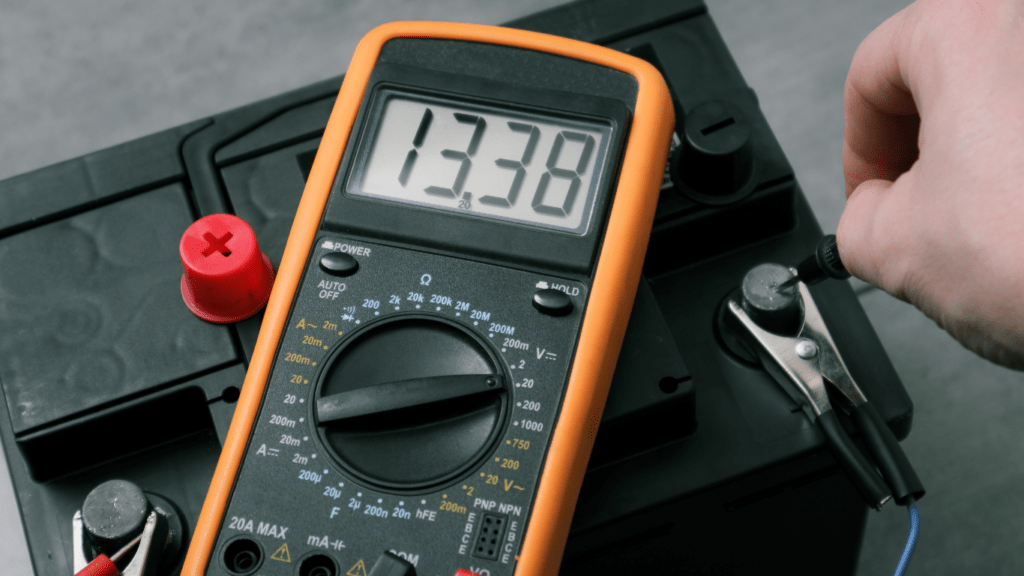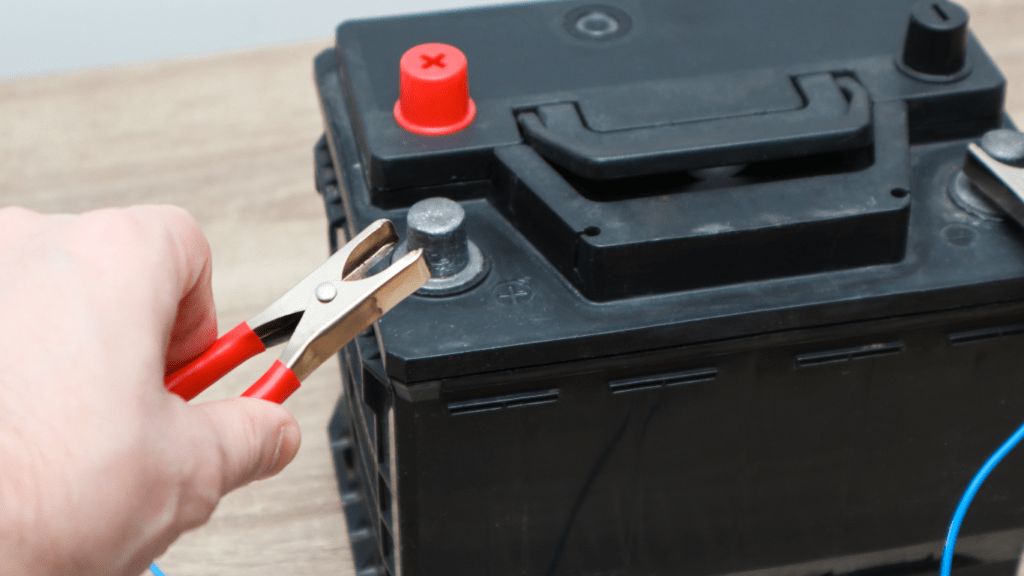The Evolution of Car Batteries
Electric car batteries have undergone significant developments since their inception. Initially, lead-acid batteries powered early electric cars in the late 19th century. Despite their low energy density and short lifespan, lead-acid batteries paved the way for future advancements.
In the 1990s, nickel-metal hydride (NiMH) batteries emerged, offering improved energy density compared to lead-acid batteries. NiMH batteries became a popular choice for hybrid electric vehicles (HEVs), like the Toyota Prius, due to their longer lifespan and better performance.
The early 2000s marked the rise of lithium-ion batteries. Lithium-ion batteries revolutionized the electric vehicle industry with their higher energy density, lower weight, and longer lifespan compared to previous technologies. These batteries enabled electric vehicles (EVs) like the Tesla Model S to achieve longer driving ranges and faster charging times, significantly boosting EV adoption.
Today’s research focuses on solid-state batteries and other cutting-edge technologies. Solid-state batteries promise higher energy densities, faster charging times, and improved safety. This progress sets the stage for future breakthroughs, enhancing electric vehicles’ overall performance and increasing their market appeal.
Emerging Battery Technologies
Electric cars are evolving rapidly due to advancements in battery technology. Several breakthrough technologies are emerging, promising to redefine electric vehicle performance and usability.
Solid-State Batteries
Solid-state batteries are set to revolutionize the electric vehicle market. They use solid electrolytes instead of liquid ones. This design eliminates leakage risk and improves thermal stability, making them safer. These batteries deliver higher energy densities, extending vehicle range. For instance, a solid-state battery could potentially double the range of a vehicle compared to a lithium-ion battery of the same size. They also charge faster, reducing downtime. Toyota and other major automotive companies are actively developing solid-state batteries, targeting market introduction by the mid-2020s.
Lithium-Sulfur Batteries
Lithium-sulfur (Li-S) batteries are another promising technology. They offer a higher energy density than lithium-ion batteries, theoretically up to five times more. This means electric vehicles with Li-S batteries could travel significantly farther on a single charge. Additionally, sulfur is more abundant and cheaper than the cobalt used in current battery technologies. However, challenges such as short lifespan and low cycle stability need addressing. Researchers are actively working on these issues, with several breakthroughs reported in laboratory settings.
Graphene-Based Batteries
Graphene-based batteries have gained attention for their unique properties. Graphene, a single layer of carbon atoms arranged in a hexagonal lattice, provides excellent electrical conductivity and mechanical strength. Batteries incorporating graphene can charge quickly, outperforming traditional lithium-ion batteries in terms of speed. Moreover, they offer a longer lifespan and higher capacity. Companies like Samsung and Huawei are exploring graphene battery applications for both electric vehicles and consumer electronics. Though still in the development phase, these batteries hold the potential to drastically change energy storage solutions due to their efficiency and robustness.
Innovations in Battery Manufacturing

Emerging technologies in battery manufacturing are setting the stage for substantial advancements in electric vehicles. Key areas such as 3D printing and recycling focus on sustainability and efficiency.
3D Printing
3D printing introduces precision and flexibility into battery manufacturing. It enables intricate designs that enhance the structure and performance of batteries. For example, batteries produced through 3D printing have increased electrode surface area, which boosts energy density. The technology also reduces waste, as components are printed layer by layer with minimal excess material. Companies like Sakuu Corporation are pioneering 3D-printed solid-state batteries, showing the potential for cost-effective and high-performance alternatives to traditional manufacturing methods.
Recycling and Sustainability
- Recycling battery components addresses raw material scarcity and environmental impact.
- Processes like hydrometallurgical and pyrometallurgical recycling recover valuable materials like lithium, cobalt, and nickel from used batteries, making it possible to reuse them in new batteries.
- Redwood Materials and Li-Cycle are leading companies in this field, emphasizing closed-loop recycling systems.
- These methods not only reduce landfill waste but also decrease the need for new raw material extraction, promoting a sustainable future for electric vehicles.
These innovations contribute to the broader effort of enhancing the efficiency, affordability, and environmental friendliness of electric vehicle batteries.
Market Trends and Predictions
The car battery industry is experiencing rapid changes, with significant implications for the electric vehicle (EV) market. Both electric vehicle adoption rates and substantial investments from the automotive industry are shaping the future landscape.
Electric Vehicle Adoption Rates
EV adoption rates are soaring globally. According to the International Energy Agency (IEA), over 10 million electric cars were on the roads by the end of 2020, and the number is expected to reach 145 million by 2030. Government policies promoting clean energy, coupled with decreasing battery costs, drive this growth. Norway leads the charge with nearly 75% of new car sales being electric, while countries like China and the US are also witnessing substantial increases. High-density urban areas, where air pollution is a major concern, see higher adoption rates, further pushing the shift toward electric mobility.
Automotive Industry Investments
Significant investments from major automotive companies underline the industry’s commitment to EV technology. According to BloombergNEF, investments in EVs and associated battery technology exceeded $500 billion by 2025. Companies like:
- Tesla
- Volkswagen
- General Motors
are investing heavily in building both EV production capacities and advanced battery technologies. Tesla’s Gigafactories and Volkswagen’s investment in solid-state battery production are prime examples. This influx of capital accelerates research and development, leading to breakthroughs that could make EVs more accessible and efficient.
Challenges and Solutions
The future of car batteries offers immense promise, yet it’s not without its challenges. Let’s explore some of the key obstacles and potential solutions.
Raw Material Availability
Raw material availability for car batteries remains a significant concern. Lithium, cobalt, and nickel are integral to battery production. Their extraction impacts the environment and supply chains. According to the U.S. Geological Survey, global lithium production was 100,000 metric tons in 2021, but as EV adoption skyrockets, demand could exceed supply. Cobalt mining, especially in the Democratic Republic of Congo, faces ethical issues due to labor practices.
Recycling plays a crucial role here. Companies like Redwood Materials recover materials from used batteries, reducing dependence on new mining. Substituting scarce materials with abundant ones is another solution. Researchers are exploring cobalt-free battery technologies to alleviate ethical and supply chain issues. For example, Tesla aims to eliminate cobalt in its batteries, focusing on nickel-based chemistries.
Charging Infrastructure
Charging infrastructure significantly impacts the widespread adoption of EVs. Despite advancements in battery technology, many places lack sufficient charging stations. The International Energy Agency reports that, as of 2021, there were only 1.3 million public chargers globally for over 10 million EVs.
Expanding charging networks is essential. Governments and private companies are investing heavily in this area. The U.S. aims to install 500,000 public charging stations by 2030, as part of its federal infrastructure plan. Ultra-fast charging technology is another solution. It minimizes wait times, making EVs more convenient for consumers. Companies like ChargePoint and EVgo are leading the development and deployment of fast-charging networks to address this gap.
Continual improvement in the charging infrastructure is crucial for the seamless integration of electric vehicles into everyday life. These solutions collectively contribute to a sustainable, efficient, and user-friendly EV ecosystem.




